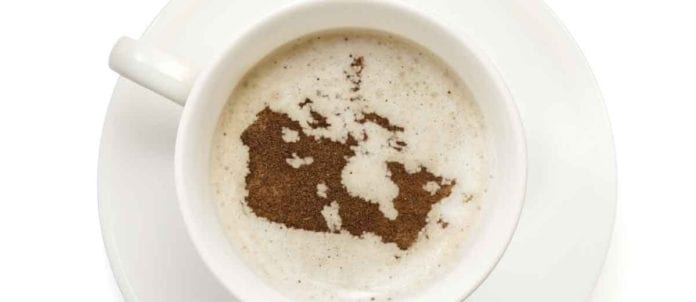Canadians love their coffee. In fact, according to recent data from Toronto-based The NPD Group, Canadians consume 2.3 billion servings of the caffeinated beverage annually.
While this bodes well for the coffee and beverage industry, there is more to the story than meets the eye. Over the last few years, consumer preferences have changed. Regular coffee consumption has been declining since 2013, driven at least in part by the rise in popularity of in-home brewing devices such as single-serve machines and the growing popularity of specialty coffee.
While 26.6 per cent of all visits to commercial foodservice include regular coffee, the numbers suggest the category has experienced a slight (two per cent) decline on the year. Put quite simply, Canadians are becoming less likely to reach for that cup of Joe when visiting commercial foodservice.
Regular and decaffeinated coffee have seen the worst declines on the year, down 57 million servings. Furthermore, specialty coffee has shown menu importance gains while regular coffee has slipped compared to last year.
Within the hot beverage category, regular and decaffeinated coffee, hot tea and hot flavoured coffee have driven declines. Total servings of hot beverages have declined by four per cent in 2016. Here is how the category breaks down:
- hot regular/decaffeinated coffee is down three per cent year-to-date
- hot tea has dropped 11 per cent year-to-date
- cappuccino/espresso/latte has remained unchanged year-to-date
- hot chocolate has seen a gain of four per cent year-to-date
- specialty coffee has grown three per cent year-to-date
Over the last year, specialty coffee has experienced the second-best servings gain among beverage categories — equivalent to an incremental 18-million servings compared to the previous year. Only bottled water showed a larger gain at nine per cent more servings. It’s also worth noting that specialty coffee growth has been solely driven by QSR chains. Specialty coffee is well developed in Quebec, but is under-developed in Manitoba, Saskatchewan and Atlantic Canada.
Although specialty coffee has proven to be a hot trend over the last three to five years, it is expected that through the rest of this decade, growth of hot specialty coffee will diminish to almost a third of the growth rate in recent years. This decline in the consumption rate is tied to a number of factors, including an aging consumer base with changing preferences and a decline in overall trend momentum.
So where do we go from here? While it’s always challenging to anticipate how trends will affect the growth of a particular category, over the next decade, hot-brewed coffee servings will grow at a stronger rate than they have in the recent past. An aging consumer base, a decrease in trend momentum and overall population growth will continue to have a positive impact on the hot-brewed coffee market.
Volume 49, Number 7
Written By Robert Carter


















